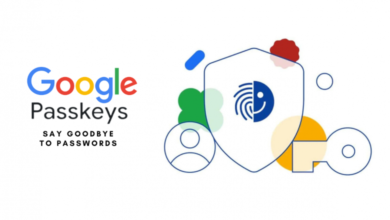
Understanding Spoofing Attacks
In the digital age, cybersecurity threats are constantly evolving, with malicious actors employing increasingly sophisticated techniques to compromise systems and data. Among the myriad of cyber threats, spoofing attacks stand out due to their deceptive nature and potential for significant damage. This blog post delves into the world of spoofing attacks, exploring their various forms, mechanisms, and the steps you can take to protect yourself and your organization.
Introduction
Spoofing attacks, a prevalent form of cyber threat, involve the falsification of data to deceive systems, individuals, or both. The objective of such attacks can range from gaining unauthorized access to sensitive information, spreading malware, or even causing disruptions in service. By masquerading as a trusted entity, attackers can manipulate the trust relationship essential for secure communication and transactions. This post aims to shed light on the different types of spoofing attacks, their working mechanisms, and the best practices for mitigating their risks.
Types of Spoofing Attacks
Spoofing attacks can manifest in various forms, each targeting different aspects of digital communication and authentication. Here are some of the most common types:
1. IP Spoofing
IP Spoofing involves the manipulation of the source IP address in a packet header to make it appear as though it originates from a trusted source. This type of attack is often used in Denial of Service (DoS) attacks, where overwhelming traffic is directed at a target system, causing service disruptions. IP spoofing can also facilitate more complex attacks, such as Man-in-the-Middle (MitM) attacks, where the attacker intercepts and potentially alters the communication between two parties.
2. Email Spoofing
Email Spoofing is a tactic used by attackers to send emails that appear to come from a legitimate source, such as a trusted business or individual. This type of spoofing is commonly used in phishing attacks, where recipients are tricked into divulging sensitive information, such as login credentials or financial details. Email spoofing can also be employed to distribute malware through malicious attachments or links.
3. DNS Spoofing
DNS Spoofing, also known as DNS cache poisoning, involves corrupting the Domain Name System (DNS) data so that queries are resolved with incorrect IP addresses. This can redirect traffic from legitimate websites to malicious ones without the user’s knowledge, facilitating the theft of sensitive data or the distribution of malware.
4. ARP Spoofing
ARP Spoofing (Address Resolution Protocol spoofing) is used within local area networks (LANs) to associate the attacker’s MAC address with the IP address of another host. This allows the attacker to intercept, modify, or block data intended for that IP address, often as part of a MitM attack.
5. GPS Spoofing
GPS Spoofing involves transmitting false GPS signals to deceive a GPS receiver into calculating incorrect position, velocity, or time information. This type of spoofing can have serious implications for navigation systems, autonomous vehicles, and other critical infrastructure reliant on accurate GPS data.
Also Check
How Spoofing Attacks Work
The core principle behind spoofing attacks is the exploitation of trust. By forging data to appear as though it comes from a legitimate source, attackers can bypass security mechanisms that rely on trusted identities. Here’s a general outline of how spoofing attacks are executed:
- Reconnaissance: Attackers gather information about the target, including IP addresses, email addresses, network configurations, and more. This information helps in crafting believable spoofed data.
- Crafting Spoofed Data: Using the gathered information, attackers create fake data packets, emails, DNS responses, or other relevant data types that appear to originate from a trusted source.
- Delivery and Execution: The spoofed data is transmitted to the target system or individual. Depending on the type of spoofing attack, this might involve sending spoofed packets over a network, emailing a phishing message, or broadcasting false GPS signals.
- Exploitation: Once the spoofed data is accepted as legitimate, attackers can exploit this trust to gain unauthorized access, intercept sensitive information, or disrupt services.
Preventing Spoofing Attacks
Preventing spoofing attacks requires a multi-layered approach, combining technological solutions with best practices. Here are some effective strategies:
1. Implement Strong Authentication
Use multi-factor authentication (MFA) to verify the identities of users and devices. MFA adds an additional layer of security beyond just usernames and passwords, making it harder for attackers to gain unauthorized access.
2. Utilize Encryption
Encrypt sensitive data in transit and at rest to protect it from interception and tampering. Protocols such as HTTPS, SSL/TLS, and VPNs can secure data transmission over potentially vulnerable networks.
3. Employ Anti-Spoofing Technologies
Deploy technologies specifically designed to detect and prevent spoofing. For example, anti-spoofing measures for IP spoofing include ingress and egress filtering, while email authentication protocols like SPF, DKIM, and DMARC can help mitigate email spoofing.
4. Monitor and Analyze Network Traffic
Regularly monitor network traffic for unusual patterns that may indicate a spoofing attack. Intrusion detection systems (IDS) and intrusion prevention systems (IPS) can help identify and respond to suspicious activity.
5. Educate Users
User awareness is critical in preventing spoofing attacks. Educate employees and users about the risks of spoofing and the importance of verifying the authenticity of communications and data sources.
6. Keep Systems Updated
Regularly update and patch systems, applications, and devices to protect against known vulnerabilities that could be exploited in spoofing attacks.
Conclusion
Spoofing attacks pose a significant threat to cybersecurity, leveraging deception to compromise trust and exploit vulnerabilities. By understanding the various forms of spoofing and implementing robust security measures, individuals and organizations can better defend against these insidious attacks. Continuous vigilance, combined with advanced security technologies and user education, is essential in maintaining the integrity and security of digital systems in the face of evolving cyber threats.



